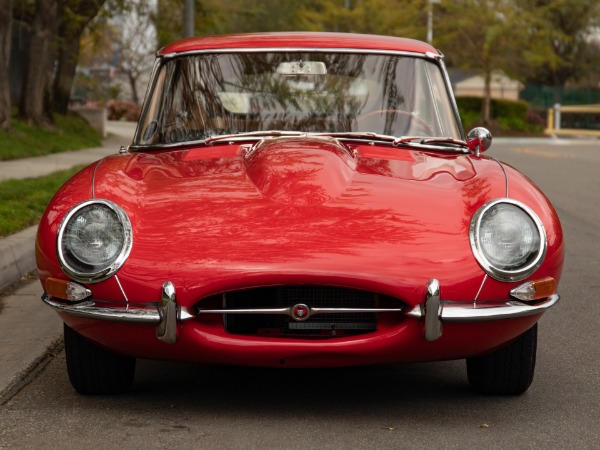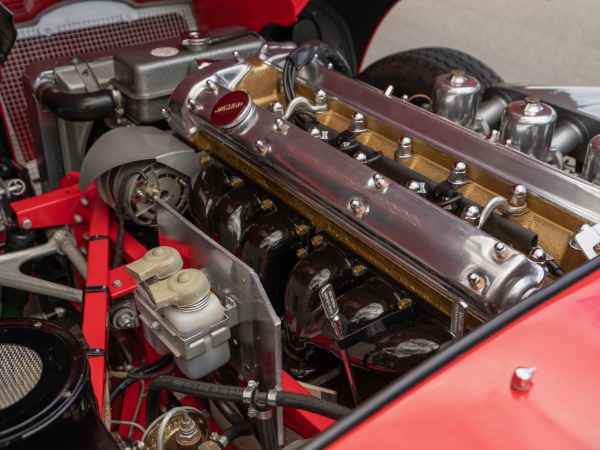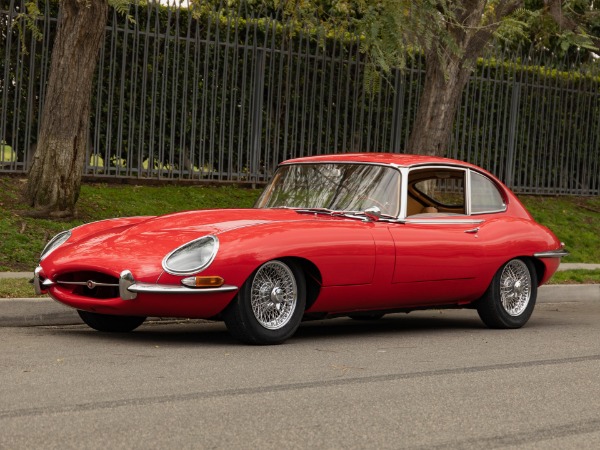The 1967 Jaguar E-Type XKE: The Pinnacle of Automotive Elegance
1967 Jaguar E-Type XKE: The Storied Legacy of Jaguar
Tracing the 1967 Jaguar E-Type XKE to its roots back to 1922, Jaguar began as the Swallow Sidecar Company, producing sidecars for motorcycles. Evolving over the decades and undergoing a series of rebrandings, Jaguar cemented itself as a hallmark of luxury and performance in the automobile world. With a legacy of producing dynamic cars that captured the public’s imagination, Jaguar’s unveiling of the E-Type at the 1961 Geneva Motor Show was a defining moment in automotive history.

1967 Jaguar E-Type XKE: A Design Born from Aerodynamics
The 1967 Jaguar E-Type XKE was not merely a vehicle designed to be visually appealing; its form was meticulously sculpted for aerodynamic excellence. Malcolm Sayer, one of its principal designers, had a background in aerodynamics, having previously worked in the aviation industry. This expertise played a crucial role in the E-Type’s design. The sleek curves, elongated front, and the way the roofline tapered were all intentional decisions to make the car slice through the air with minimal resistance.
Monocoque Construction: A Leap in Car Design
One of the standout features of the E-Type was its innovative use of a monocoque construction. This approach, which involves using the external skin to support some or most of the load, was unusual for sports cars of the era. By integrating the body and chassis as one unit, Jaguar managed to achieve a blend of lightweight construction with high rigidity, a perfect formula for a high-performance sports car. This not only contributed to its agile handling and speed but also its overall safety.
Engine Innovations: More Than Just Power
Under the elongated bonnet of the 1967 XKE lay the beating heart of the vehicle: a 4.2-liter inline-six engine. But it wasn’t just about the raw horsepower it could produce. The engine was a masterpiece of engineering, boasting a wide torque band that provided excellent performance across a range of speeds. The addition of a new synchronized gearbox made gear shifts smoother and more intuitive. This focus on the driver’s experience, rather than just pure speed, highlighted Jaguar’s understanding of what made a sports car truly great.

Independent Rear Suspension: A Ride Like No Other
Another significant innovation was the E-Type’s independent rear suspension (IRS). At a time when many sports cars were still using solid rear axles, Jaguar took a leap forward. The IRS system provided improved ride quality and superior handling, especially during high-speed cornering. This system was so advanced and effective that variations of it were used in various Jaguar models for decades to come.
SELLING A 1967 Jaguar E-Type XKE?
A Masterclass in Aesthetics
Beyond its technical innovations, the design of the E-Type was a masterclass in aesthetics. The car’s silhouette was a harmonious blend of soft curves and sharp lines. The iconic elliptical grille and large glass-covered headlights, gave the E-Type a face that was instantly recognizable and deeply evocative. Its wire-spoke wheels, a nod to sports cars of the past, added a touch of classic elegance to an otherwise futuristic design.
Inside, the attention to detail was evident everywhere. From the tactile satisfaction of the toggle switches to the polished wood of the dashboard, every element was thoughtfully designed and impeccably executed. The cabin felt intimate, wrapping around the driver and passenger, making them feel connected to the vehicle in a profound way.

OUR 1967 JAGUAR E-TYPE XKE 4.2L SERIES I COUPE
‘Introducing the exquisite 1967 Jaguar XKE E-Type Series I 2+2 Coupe: a blend of power, elegance, and history. Under its ‘Carmen Red’ exterior lies a matching 6-cylinder 4.2L/246HP engine paired with an automatic transmission. Its ‘Biscuit’ leather interior, chrome ‘knock-off’ wire wheels, and wooden steering accentuate its beauty. Originating from a February 1966 build and dispatched to California the following March. This E-Type boasts over half a century of heritage.’
Historical Impact & Legacy
Upon its launch, Enzo Ferrari reputedly dubbed the E-Type “the most beautiful car ever made.” Its influence was pervasive, making appearances in movies, drawing celebrity ownership, and becoming a staple in high-end collections. More than just a car, the E-Type was an emblem of a period. Marked by optimism, innovation, and a fervent sense of freedom.
1967 Jaguar E-Type XKE: An Era-Defining Influence
The E-Type wasn’t just a car; it was a cultural phenomenon. It influenced car design for generations and became a benchmark for what a sports car should be. Museums, including New York’s Museum of Modern Art, included the E-Type in their collections. Underscoring its significance not just as an automobile but as a piece of art.
In Conclusion:
The 1967 Jaguar E-Type XKE is more than just a classic car. It’s a testament to Jaguar’s commitment to excellence, innovation, and timeless beauty. As we look back, it’s clear that the E-Type wasn’t just part of history—it helped shape it. Today, it stands as a beacon of a bygone era, still capturing hearts and inspiring dreams with its unmatched elegance.

